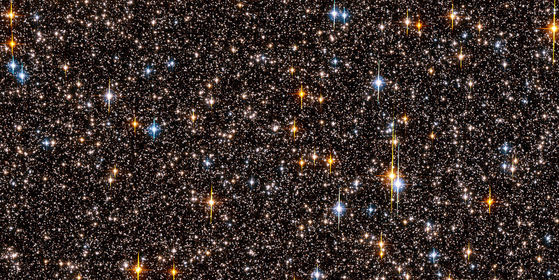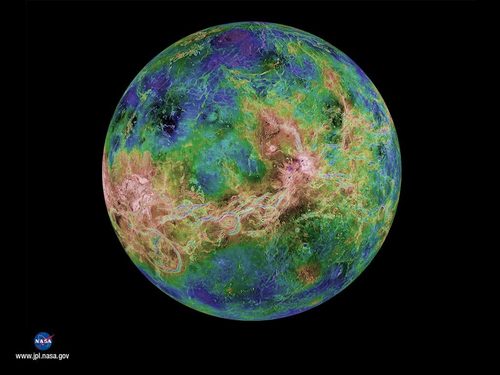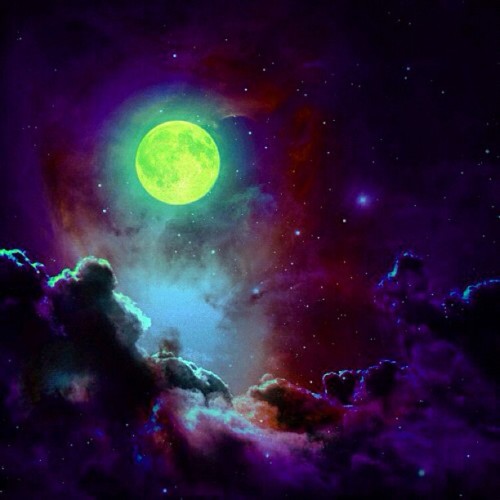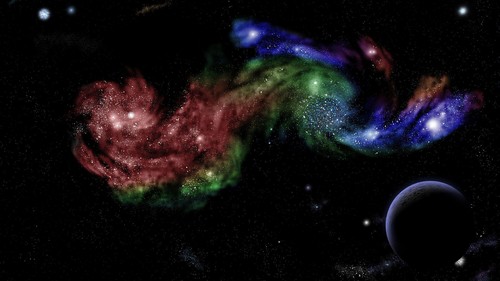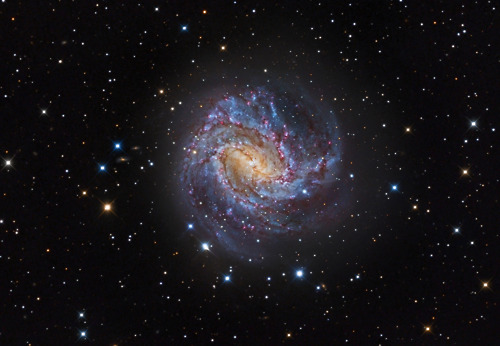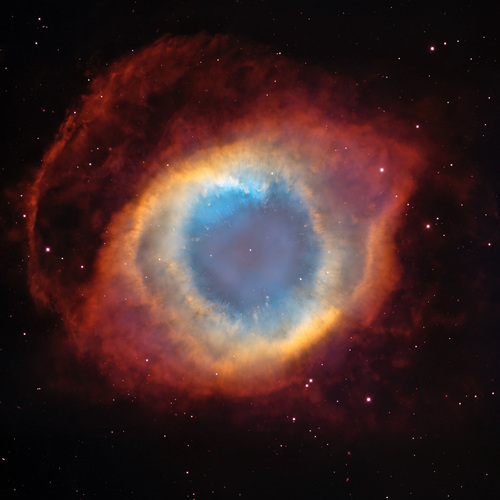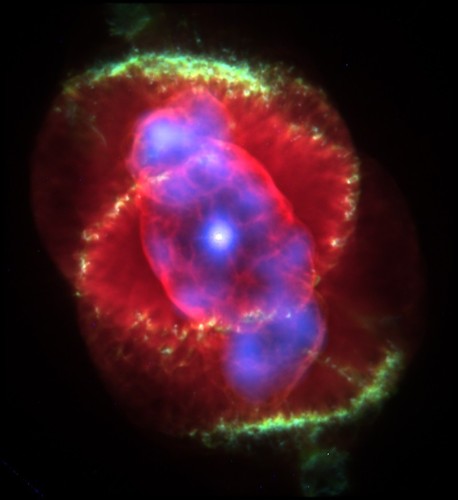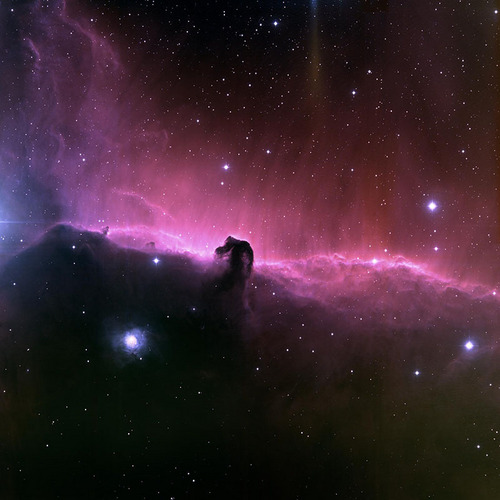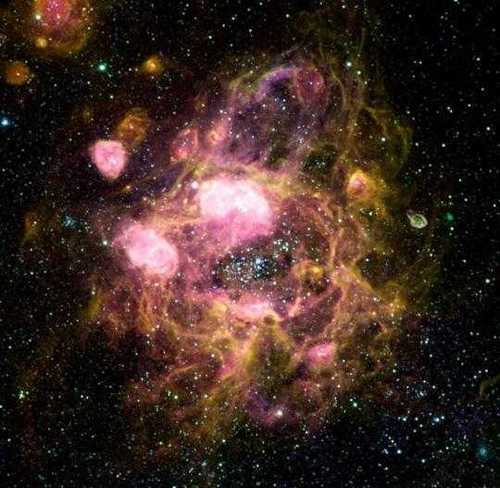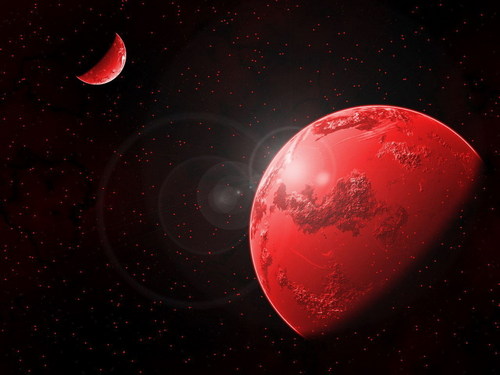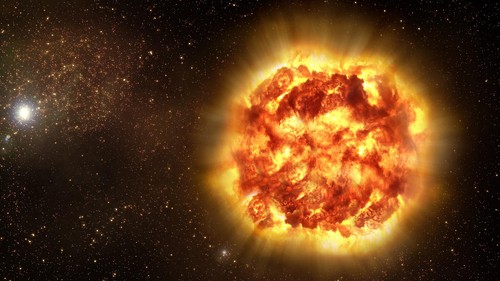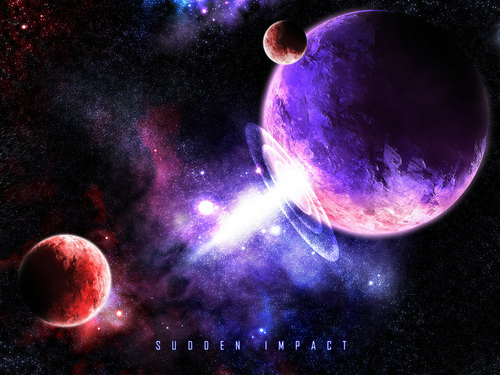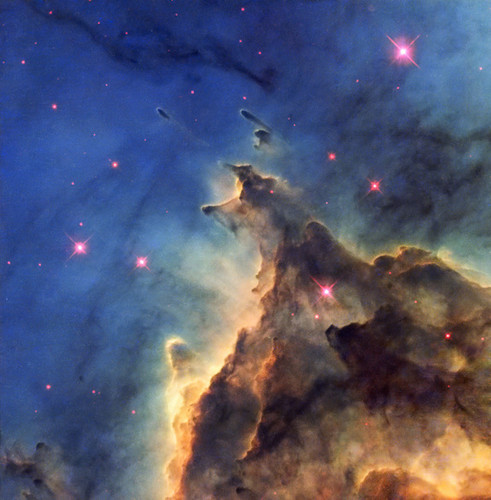A bunch of Astronomical facts I find interesting. Hope あなた enjoy them and learn something new :)
- Every 秒 there are 4,000 stars that are born and 30 supernovae that take place in the observable universe.
- The ハート, 心 of a 星, つ星 reaches 16 million °C. A grain of sand this hot would kill someone 150 km away.
- 宇宙 is not a complete vacuum, there are about 3 atoms per cubic meter of space.
- The coldest place in the universe is on Earth. In Wolfgang Ketterles lab in Massachusetts. 0.000000000001 degrees Kelvin.
- Most of the universe is dark. Only 4% of the universe is what we can actually see, stars, galaxies, planets, nebulae etc…the rest is dark. Around 22% is made up of dark matter, and the rest is made up of dark energy
- Neutron stars are so dense that a single teaspoon of them would weigh もっと見る than the entire population of Earth. (112 million tonnes)
- At the speed of light, time stops.
- Atoms are 99.99999999999...% empty space, meaning all of the matter making up the entire human race could fit into a sugar cube.
- Sagittarius 3, an interstellar gas cloud, contains a billion billion billion liters of alcohol.
- If あなた could travel at the speed of light (186,000 miles per second) it would take 100,000 years to クロス our galaxy.
- The Sun travels around the galaxy once every 200 million years – a journey of 100,000 light years.
- The very furthest galaxies are spreading away from us at もっと見る than 90% of the speed of light.
- The Universe may have neither a center nor an edge, because according to Einstein’s theory of relativity, gravity bends all of 宇宙 time around into an endless curve.
- Matter spiraling into a black hole is torn apart and glows so brightly that it creates the brightest objects in the Universe – quasars.
- The swirling gases around a black hole turn it into an electrical generator, making it spout jets of electricity billions of kilometers out into space.
- The opposite of black holes are estimated to be white holes which spray out matter and light like fountains.
- The brightest 星, つ星 in each constellation is called the Alpha Star, the 次 brightest Beta, and so on.
- A comet’s tail is made as it nears the Sun and begins to melt. A vast plume of gas millions of kilometers across is blown out behind によって the solar wind. The tail is what あなた see, shining as the sunlight catches it.
- Venus, not Mercury, has the hottest surface temperature for a planet due to the Greenhouse Effect.
- The Moon causes not only the sea to rise as the Moon passes over it, but the land rises and falls too, によって as much as 30 cm each day
- Scientists think Jupiter’s moon Europa which is slightly smaller than Earth’s moon, contains even もっと見る liquid water than all the Earth‘s oceans put together.
- We know もっと見る about 宇宙 than we do about our deep oceans
- Giant stars have burned all their hydrogen, and so burn helium, fusing helium atoms to make carbon.
- The Shoemaker-Levy 9 comet smashed into Jupiter in July 1994, with the biggest crash ever witnessed.
- Planet Uranus was discovered によって William Herschel, who wanted to name the planet George, after King George III, but Uranus was eventually chosen.
- At the center of nearly every galaxy, including our own, is a supermassive black hole.
- A black hole's gravity is so intense, it can slow down time. This is called, the gravitational time dilation.
- Over 100 artificial satellites are now launched into 宇宙 every year, a few of which are 宇宙 telescopes.
- The higher up あなた are the slower あなた age. So astronauts who return to Earth, arrive ホーム slightly younger than if they had spent that time on Earth.
- Every 年 the sun evaporates 100,000 cubic miles of water from Earth (that weighs 400 trillion tonnes)
- Mars’s 火山 Olympus Mons is the biggest in the solar system. It covers the same area as Spain and is three times higher than our Mount Everest.
- Planets have magnetic field around them because of the liquid iron in their cores. As the planets rotate, so the iron swirls, generating electric currents that create the magnetic field.
- Jupiter spins right round in less than 10 hours which means that the planet’s surface is moving at nearly 50,000 km/hr.
- The Sun is 99.86 % of all the mass in our solar system. The Earth, the other planets, moons, asteroids, comets etc account for just 0.14 %
- To save fuel on journeys to distant planets, 宇宙 probes may use a nearby planet’s gravity to catapult them on their way. This is called slingshot.
- Black holes are so incredibly dense, one with the mass of Earth would only be 9mm across. Half the size of a penny.
- There is no sound at all in space. Sound travels in waves like light または heat does, but unlike them, sound travels によって making molecules vibrate. So, in order for sound to travel, there has to be something with molecules for it to travel through. On Earth, sound travels to your ears によって vibrating air molecules. In deep space, the large empty areas between stars and planets, there are no molecules to vibrate. There is no sound there.
- Jupiter plays a crucial role in human life. Most comets and asteroids that threaten our existence get yanked off path によって Jupiter's gravity.
- The furthest objects built によって mankind are the two Voyager Spacecraft. In a few years they will be leaving the solar system completely and entering interstellar space. This will be the very first time anything man-made has ever left the solar system.
- The Earth gets 100 tons heavier every 日 due to falling 宇宙 dust.
- Hubble’s law showed that the Universe is getting bigger – and so must have started very small. This led to the idea of Big Bang.
- Venus's days are longer than it's years.
- Three moons have yet been found to have their own moons: Saturn’s moon Titan, Jupiter’s Lo, and Neptune’s Triton.
- The Cosmic Microwave Background that we detect today started traveling towards us over 13 billion years ago.
- If あなた stand on the equator, あなた are spinning at about 1,000 mph in as the Earth turns, as well as charging along at 67,000 mph round the sun.
- The fastest spinning objects in the Universe are neutron stars – these can rotate 500 times in just 1 second.
- Vega will become our new north 星, つ星 in 12000 years.
- Uranus’s moon Miranda is the weirdest moon of all. It seems to have been blasted apart, and then put together again.
- The 2011 earthquake that hit 日本 was a magnitude 8.9. It was the 7th largest in recorded history, and altered the Earth's axis によって 10 cm.
- True binary stars are two stars held together によって one another’s gravity, which spend their lives whirling around together like a pair of dancers.
- The Sun puts out もっと見る energy in 1 second, than has been used in all of human history.
- Weightlessness makes astronauts grow several centimeters during a long mission.
- The first living creature in 宇宙 was the dog Laika on – board Sputnik 2 in 1957. Sadly, she died when the spacecraft’s oxygen supply ran out.
- Material caught in spin around black holes is superheated によって millions of degrees.
- Mars has the longest and deepest canyon in the solar system, the Valles Marineris. If it was on Earth it would stretch right across the United States
- Black holes can spin over 950 times a second. Objects on the event horizon of a black hole travel at approximately half of the speed of light.
- The temperature of the earth's interior increases によって 1 degree every 60 feet down.
- Stars twinkle because we see them through the wafting of the atmosphere.
- The ice on Pluto is harder than steel.
- When supernovae explode they jettison matter into 宇宙 anywhere between 9,000 and 25,000 miles per second.
- If あなた could stand on the north pole of Uranus, the Sun would rise and stay in the sky for 42 years, before setting again for a 42 年 long night.
- Jupiter is heavier than all the other planets in our Solar System put together.
- If あなた could squeeze all the stars in the Milky Way together into a single mass, it would fit into the volume of 宇宙 between our Sun to the nearest star
- Saturn’s main ring system stretches nearly the distance from the Earth to the Moon
- The nuclear fusion reactions in the Sun’s core send out billions of light photons every 分 but they take 10 million years to reach its surface.
- The Hiroshima bombs released 84 trillion joules of energy. A supernova releases 125,000 trillion trillion times as such.
- On the moon’s surface are large dark patches called seas – because this is what people once believed they were. They are, in fact, lava flows from ancient volcanoes.
- Galaxies are often found in a group または clusters. One cluster may have 30 または so galaxies in it. The Milky Way belongs to a cluster of 30 galaxies called the Local Group, which is 7 million light years across.
- Saturn's rings are arguably the flattest structure known to man, being some 300,000 km end-to-end but with a vertical thickness of about 10 meters.
- When a spacecraft reaches 140% of the orbital velocity i.e. 11.2 km/sec, it is going fast enough to break free of the Earth’s gravity. This is called escape velocity.
- There are もっと見る stars in the observable universe then number of grains of sand on Earth.
- The Sun loses 4 million tonnes of material into 宇宙 every second, but has enough to last for another 5 billion years
- The Sun has sunspots, the dark spots on the Sun’s photosphere (surface), 2000°C クーラー than the rest of the surface.
- The afterglow of the Big Bang can still be detected as microwave background radiation coming from all over space.
- The Earth is not a sphere. It actually is an oblate spheroid, it is squashed slightly at the poles and bulges out at the equator due to its rotation.
- Dried up riverbeds 表示する that Mars probably once had water in its surface. There is sometimes ice at the poles and maybe water underground.
- Since our solar system was formed 4.5 billion years ago, it has only done 20 orbits of the Milky Way Galaxy so far
- There are as many oxygen atoms in a breath as breaths of air in the atmosphere.
- Helium is the only substance in the universe that cannot be in solid form. It can't be cold enough.
- Astronomers have reported the discovery of a huge water vapor 雲, クラウド floating around a black hole in space. The 雲, クラウド is so big that scientists estimate it holds 140 trillion times the mass of water in the Earth's oceans, and is approximately 10 billion light years away.
The find is the largest discovery of water anywhere in history, and has been found in a distant “quasar.”
- A supernova within thousands of lightyears from Earth would scorch our atmosphere and exterminate all life.
- Saturn's moon Titan has liquid oceans of natural gas.
- Metals in 宇宙 can be easily fused. The Earth’s atmosphere coats metals with oxidized material, but in oxygen-less 宇宙 it barely exists. So, if two pieces of metal are pressed one to each other, they could be well welded. That’s the reason why NASA coats the metal surface of its spaceships when they’re sent to outer space.
- Earth's moon was likely formed after an early planet name Theia crashed into Earth.
- 90-99% of all normal matter in the universe is hydrogen.
- Because of the speed the sun moves at, Solar eclipses can last at most 7-8 minutes. Lunar eclipses however can last 1 時 and 40 minutes.
- When the moon is directly above your head または if あなた stand at the equator, あなた weigh slightly less.
- If あなた could put Saturn in an enormous bathtub, it would float. The planet is less dense than water.
- Just after the Big Bang, everything in the universe was in liquid form.
- A planet nicknamed "The Genesis Planet" has been found to be 12.7 billion years old making it the oldest planet ever found.
- The shape of the universe looks very similar to that of a brain cell.
- Every year, the moon moves away from Earth によって 3.8 centimeters. Because of this Earth's rotation is slowing at about 0.002 a century. At the time of the dinosaurs, one 日 was only about 23 hours long.
- If あなた were standing on Pluto at its midday, it would look like a moonlit night here on Earth. The sunlight that reaches the demoted planet Pluto is 1,000 times weaker than on Earth
- Only a half a billionth of the energy released によって the sun reaches Earth.
- Rouge planets are not bound によって any star, brown dwarf または another planet which makes them free float around the galaxy.
- Some brown dwarfs have liquid iron rain falling down on them.
- The light emitting from the Sun is actually 30,000 years old. It took 30,000 years inside the sun to produce.
- Of over 20 million meteors that are observable every 日 only one または two reach the surface of Earth.
- The closest black hole to Earth is only 1,600 light years away.
- The atmosphere on Earth is proportionately thinner than the skin on an apple.
- If あなた look up at the stars with your naked eyes on a clear night, あなた will only ever see 0.000003 % of the number that make up the Milky Way
- If あなた attempted to count all the stars in a galaxy at a rate of one every 秒 it would take around 3,000 years to count them all.
- Light from distant stars and galaxies takes so long to reach us, that we are actually seeing objects as they appeared hundreds, thousands または even millions of years ago. So, as we look up at the sky, we are really looking back in time.



